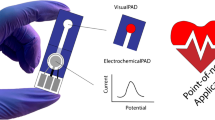Abstract
Beltest, the Belgian accreditation body, has investigated flexibilization of the scope of accreditation for chemistry laboratories and food and water microbiology laboratories. This flexibilization, synonymous with test-type accreditation, allows a laboratory to add new test methods or retry previous test methods without having to undergo a new audit by Beltest. It has been used for nearly ten years by German and Swiss accreditation bodies. Flexibilization permits the validation of methods and results, given that the competence of the particular laboratory is already well established. This new concept in microbiology allows client’s needs to be adequately met, and facilitates the quick establishment of a method in several laboratories at once in case of a public health crisis. The first laboratory to participate at this investigation on the flexibilization concept, as a test of the concept, was the Belgian reference laboratory for food microbiology.
Similar content being viewed by others
Author information
Authors and Affiliations
Rights and permissions
About this article
Cite this article
Leclercq, A. Flexibilization of the scope of accreditation: an important asset for food and water microbiology laboratories. Accred Qual Assur 7, 299–304 (2002). https://doi.org/10.1007/s00769-002-0494-7
Issue Date:
DOI: https://doi.org/10.1007/s00769-002-0494-7




